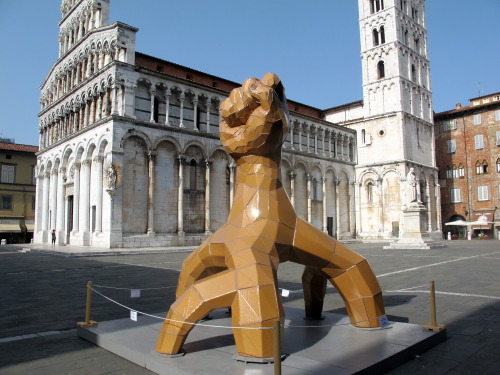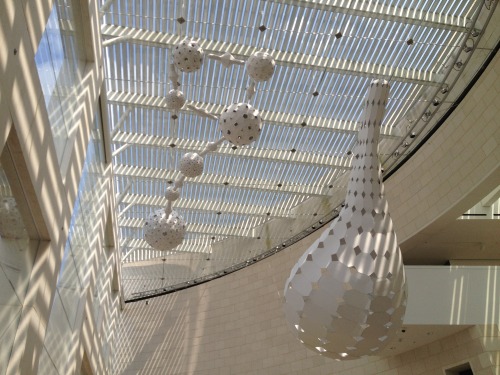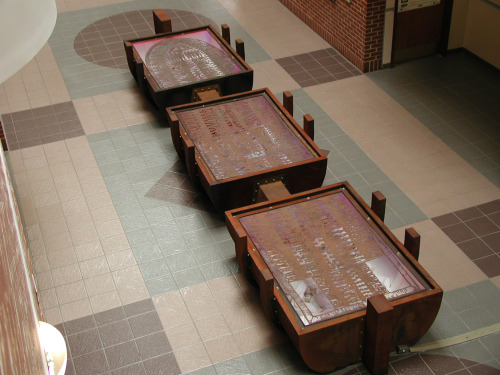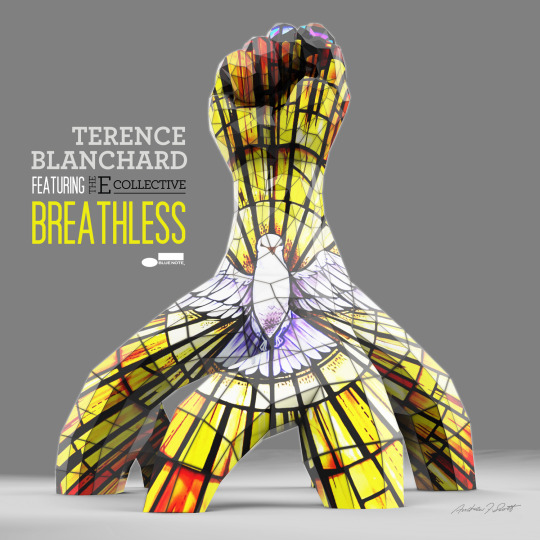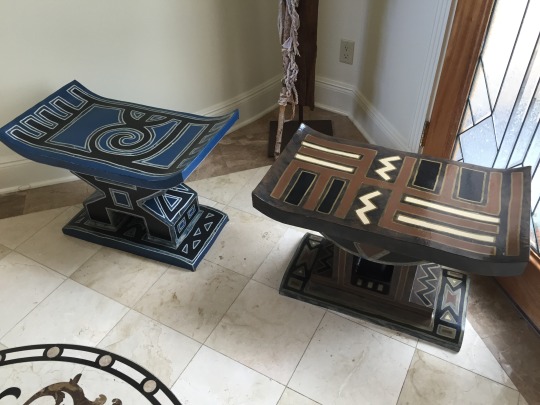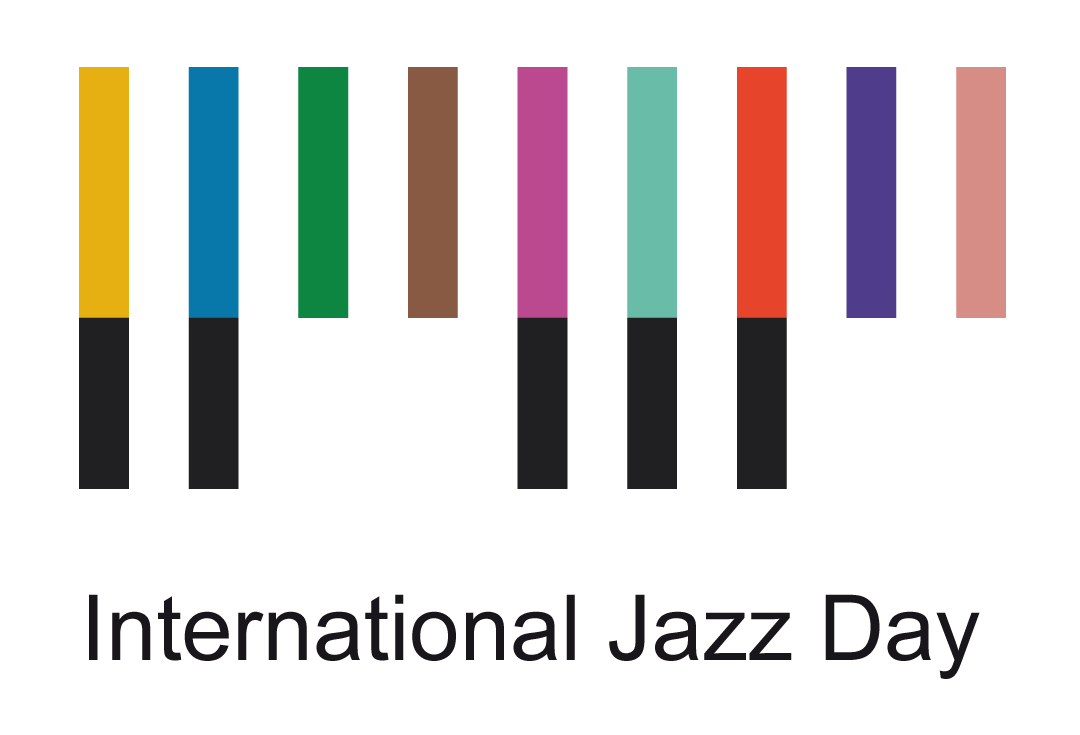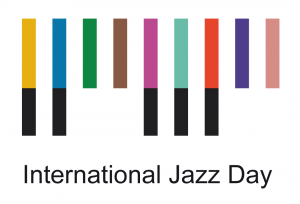Sitting With Andrew F Scott, Artist and Sculptor
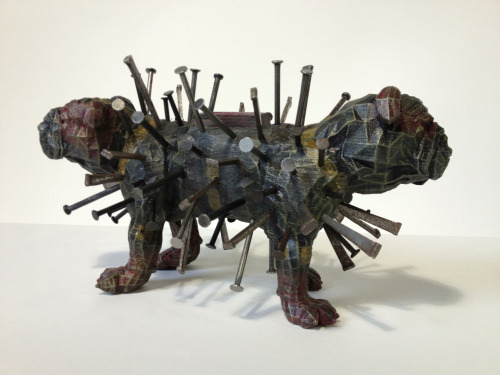
I knew there was only one artist to create the cover “Breathless”; the sculptor, Andrew F. Scott. Of course, growing up with Andrew through our younger days in Brooklyn, and his being a friend since then, I’ve watched his art grow. The midnight talks we had back then, about making art that had meaning and integrity, still resonates. At one point, when I was struggling with how to explain to the record company the kind of image I would need to wrap together all the subtexts underlying the music, I visited Andrew’s Flickr account. And there it was. But now I’m getting ahead of myself.
We invited Andrew over to New Orleans, so we could have a sit-down and delve into his creative process and dig deeper into his trove of art. How growing up in Brooklyn during the ‘70s and then working in Georgia, now Texas, informs his search for truth in art. And, of course, drop all those famous names of our friends from our Brooklyn years that no one seems to believe were in that one place, at the same time, and the fact that we were there too.
Andrew and I sat for the discussion in front of some video cameras so that we could capture the moment and make some little films for my continuing series, THE BLANCHARD FILES over at YouTube.
WE’VE BEEN TALKING ABOUT DOING THIS FOR A REAL LONG TIME
TERENCE BLANCHARD: it’s so interesting that we’re finally getting to work together. We’ve been talking about doing this for a long time. It’s a cool thing that both of our careers have been constantly developing and evolving and its gotten to the point where these journeys have collided. And collided in a cool way. You don’t know this but when I was doing the music for this album I happen to be on your page, dude, and I saw that image of the Black Man Grove and I fell in love with it. The first thing I thought of was like, “Okay, that represents power, strength, resilience, peace; all those things.” I knew that’s what we needed for this album, that’s what this album is all about. That’s exactly what we’re trying to do with this group. And then what you did to modify it was amazing.”


ANDREW SCOTT: What you first saw was the technical projection test in my studio. I was just trying to work out something. When I started teaching at the University of Texas, Dallas my work went through this change again. With all the technology available there, I began to do these works with painting sculptures three dimensionally with light. And you saw that test. When you got back to me and said you were really excited about it my immediate reaction was; “okay, I gotta dial this thing in.” A lot tighter, to really say some of the things you were trying to say in the music. It’s funny that at the same time you were doing your work with Breathless; where you were dealing with this issue of how “projected” images affect us socially and culturally, over in Dallas I was dealing with the same thing. Layering meaning on top of meaning, though, in my case, with light.
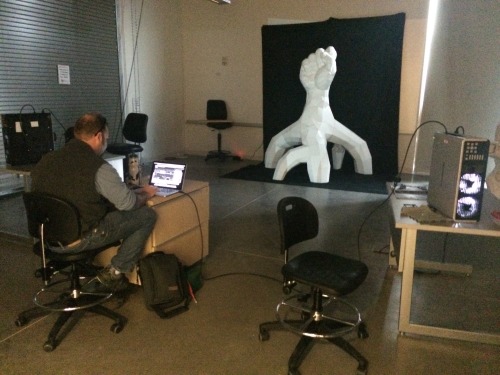
And that’s what, that’s when we began to resonate on the same frequency and I knew that this thing would happen naturally and beautifully. I went back and really tried to take some of the things that we discussed about wanting to represent in this album and set about capturing it in that cover image.

TB: Dude, you did. Because you know, the power is right there in the art. This one woman came up to me in Denver and she talked to me about the stained glass, she talked about the dove and the fist and it all resonated for her. That’s the thing that is amazing about what you accomplished man. It’s beautiful.
AS: I really appreciate that and that’s what good art does. That’s what good music does; that’s what it’s all about. Often, as the artist, you know what the work means to you. And when I look at that sort of Black Man Grove series, I see it in two contexts. I see it, I combined the fist, which is a symbol of power universally across the globe, it also combines the mangrove tree roots, which is also a symbol of resilience that grows equatorially all over the world.

TB: You might want to explain a little more here about the mangrove.
AS: Okay, a mangrove is a tree that grows all along the equatorially line around the world. You’ll find them here in Louisiana, you’ll find them here in Florida, you’ll find them in Africa, you’ll find them in Asia. They sort of mitigate that place where the sea meets the land; which makes them very important in terms of soil erosion, for nutrients putting nutrients back into the soil and to help sustain the life forms that live around them. The black mangrove is even more interesting. It can secrete salt. The salt grows through it and it secretes it back out. In some of these areas that are often covered in water and other times dry, the black mangrove has these things called pneumatophores, which are tube-like growths which stick up out of the ground and breathes for the tree.

And a lot of times, artistically, what you want to do is combine different things and put them together and see what those compound relationships create and what they evoke. When I thought about that plant growing around the world, in so many places, I thought it was a really wonderful symbol of resilience. The same thing happens in music, you know.
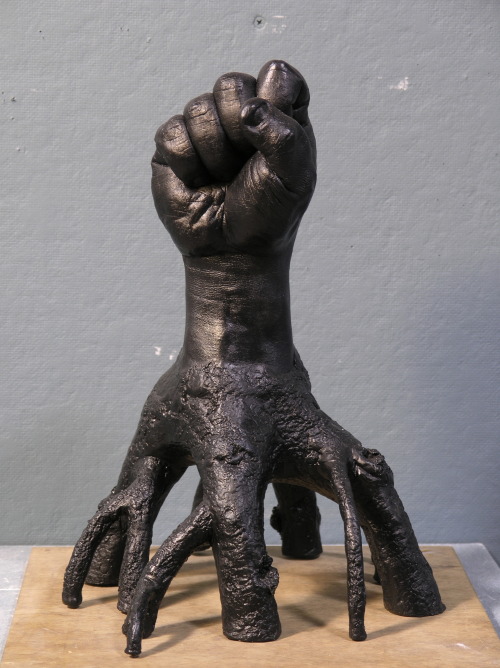

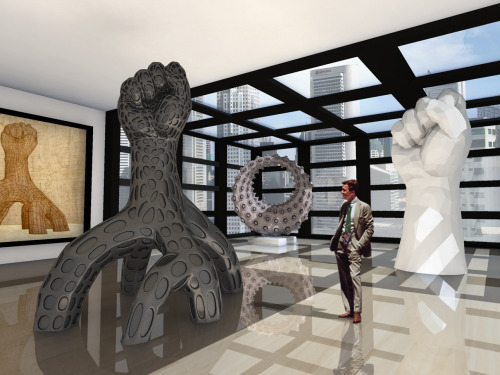
I began that series when I left Ohio and moved down to Georgia. And my world went from like really really expansive to..woosh..the smaller studios of the Savannah College of Art and Design. And the question I felt I had to answer was whether or not you can create something with that kind of power at an intimate scale. Working on this series over the past ten years charts my progression with answering that question, as well as charting the integration of these digital fabrication technologies into my work. At UTD, we have sound to work with, we have video projectors to work with, but I impress on my students, you still want to make profound artistic statements with these technologies that make the work resonate even though people don’t have to know about all the technical aspects of how it’s done.
TB: Sure, same thing with music.
AS: The same thing. And so when you got to me and you said; “man I really love that image.” I really wanted to bring in another element and adding in the dove, adding in that stained glass element layered in a very celestial aspect to the work, an element of peace to that really strong, of strength and power and resilience. That’s a three elements. a multiplier of three and the way the art can be interpreted is expanded. I’m not surprised people come at it and feel in different ways, because it’s meant to be really saying something.
TB: It is saying a lot. I think that you have created our generation’s version of the peace sign. You know what I mean? Because it encompasses so much of what’s going on in our community right now; in terms of everything; the “I Can’t Breathe” movement, the strife and discord that’s going on with our youth in this country, the discontent with the status quo. As well you have picked up on the resiliency in how the younger generation is handling it and dealing with it, because they’re starting to speak truth to power, but from a collective point of view. And it’s beautiful to see. They’re feeling a need to express themselves but in an intelligent way that really can effect some change. When I saw that image, that image to me represented all of that.
AS: And for me, it’s a very affirmative statement of power, unity and desire for change. But it’s also a desire for peace.
TB: Desire for PEACE! There you go.
AS: And spirituality in some way and what gives the movement and the time amongst our youth, its integrity. It’s not so like a weak and passive thing, no…
TB: No!
AS: It’s very assertive.
TB: Right.
AS: It’s peacefully assertive and not in a passive way, but peace as an assertive thing as a strength.
TB: And that’s part of the history of the Civil Rights Movement, been a part of the history of this country, and part of movements all around the world. You know, so that’s what I love about it. Man, when I first saw it, all of those things hit me like that! With that first image. And I said; “man, we gotta get my man to do this.”
WE GO A WAYS BACK
TB: So lets back up, we got a lot of history together, we go a ways back. We ain’t gonna tell them how far back, but just for those who don’t know, give us a little bit about your background.
AS: I’m originally from Brooklyn, New York. Like many of us, I started in High School with an exceptional teacher. Mine was Renee Darvin of Beach Channel High. She recognized my talent and inspired me so much. I received a scholarship to Long Island University out in Southampton to study drawing. And while there I took a 3-D design class and caught the sculpture bug. It was during that time between leaving Long Island University, Southampton, and going to Ohio State for graduate school that we met. I got my MFA in sculpture but during that time I began to study computer graphics and when I finished the work there, I went into the Advanced Computing Center for the Arts and Design and studied computer animation. I connected a relationship from animation to sculpture and the journey continued from that point.


TB: I remember those phases. You would send me stuff. I remember you did the piece with the computer chips. Oh man, so it’s almost like I went through this thing with you.
AS: And, it’s a beautiful thing because, as you just stated, in a strange way we’ve shared this artistic journey, and you’re one of the rare people who can say you can remember me when I was a painter.
TB: Right. When you said earlier, you caught the 3D bug, I was like, “oh, that’s when it shifted.”
AS: Well, it’s kinda funny because in undergraduate school, I was a sculptor. But when I came back to Brooklyn, painting was what I could do in my apartment. My artistic impulse had to find a place and a way to express itself. And during that time and that phase and that moment, it was through painting and drawing. And it’s a wonderful thing. And also, you have seen this evolution of the work from knuckle-dragging sculptor…
TB: Yes!
AS: …Making things out of steel…
TB: Woooo, right!

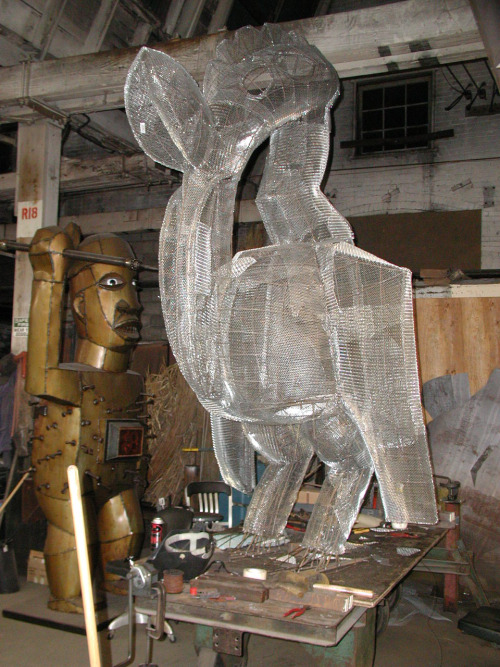
AS: To creating these things that employ all these digital and computer technologies, which is the other side of my artistic personality.
TB: Well, one of the things, you know, we talk about all the time, is that you know, people should know about your huge sculptures. Those things were awesome. I love those.
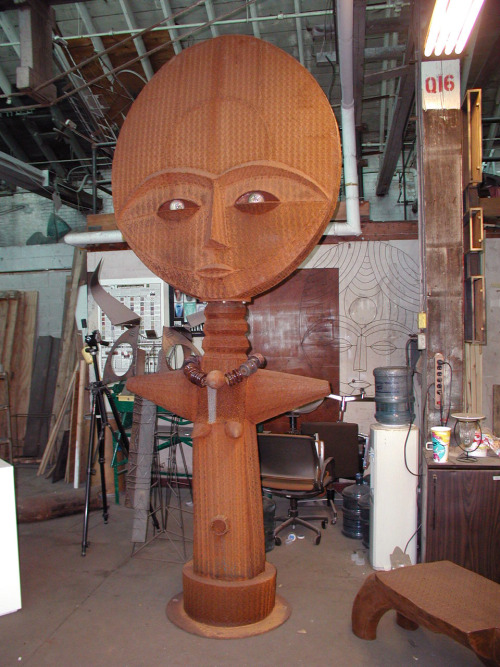
AS: And I’d like to put that work into the broader context of the body of what I do. A lot of people think that all I do is this computer stuff, this digital fabrication stuff, because that’s what they see now. But during those sort of “Ohio years”, when I had the big studio, there was never any need to make small work and I was doing a lot of these large forms that were based on these forms found in African art. And that’s where I sort of honed and developed that dialog of re-contextualizing these images and shapes that we find in African art and putting them in a more modern, both material and social twist on them.
TB: I remember that studio. I remember coming there one time and visiting you, man, and you had these huge things. I’m like, “Dude!” Man, the African dolls, the fertility dolls, oh those things were amazing
BACK WHEN WE WERE IN BROOKLYN
TB: Getting back to when we were in Brooklyn. That was a time, wasn’t it? There was this community, a sense of community that we were involved in. I mean, while we were in it, we really didn’t understand it, but to think of all of the people that were there and everything that was going on, it was amazing.
AS: That was a an incredible time by any measure. And like you said, you never understand it, or know it, or see it, while you are in the midst of it, but looking back that was incredible. What was incredible to me, coming from a place like Southampton and doing undergraduate school there, coming back to Brooklyn and being surrounded by, and seeing a lot of twenty-something young creatives across the whole media spectrum, going for it. That was exciting.
TB: Just to name a few of our community: Biggie Smalls, Spike, Chris Rock, Nelson George…
AS: Lorna Simpson.
TB: Right…Wesley Snipes, Wendell Pierce, Wynton and Branford Marsalis. You know, It’s crazy.
AS: Sometimes I talk to people about that and you tell them about this, and they go “yeah, sure.” It’s tough for them to comprehend.
TB: Right! They don’t believe you.
AS: As a young artist, what I took from that time, more than anything else were these two things: It instilled in me with a level of confidence to really go for it.
TB: Exactly.
AS: And knew that you had to go for it. That made me want to really dream big and make statements in the world because I saw my peers doing that. So there was this this model across a lot of difference disciplines with which to model how you would move forward in this art world.
TB: Yeah, it was really incredible, you know, when I think back on it because everybody was into something. And just walking in the street, you would run into people, it was like; “Oh man, what are doing? Well man, I got this thing I’m working on, boom boom boom, and it was like that everyday in Brooklyn.
AS: That hustle gene was strong.
TB: That’s a good way to put it. Hustle gene!
AS: And it was a very positive way to have that hustle gene juxtaposed with some of the other ways that manifested itself.
TB: Do you think that growing up in that community still has an effect on you?
AS: It does. It does and especially when you look at our lives now, when we’re older and we’ve seen how these artists have matured. We look at their artistic journeys and, even today, you feel a sense of responsibility for representing that time, for representing that place, in a positive way. And so, more than anything else, I can no longer say, I didn’t see anyone like me who’s out there in the world doing it. That’s what I take from it. I go into the studio knowing I have a responsibility to sort of represent that time, that place, that generation. Because we’re making history.
TB: Right.
AS: And you don’t want to be the weak link in that chain.
TB: We were all young and when you ran into people in the street, if you didn’t know any better, it was just another young kid. Like we were playing basketball, you know, on the court, but then when you actually started to have conversations with them. “Wait a minute, hold on,” you know what I mean? “There’s something else going on here.” Chris, who most people know as Biggie Smalls… I remember, Chris was working with Donald Harrison. He would go on over to Donald Harrison’s house and then say; “oh yeah”—he called me “maestro—”oh yeah, maestro, me and Donald man we’ve been working on some music.” And I’m “oh okay”, but there always stuff like that going on in the neighborhood. And I kinda miss that, you know.
AS: And there was the intensity, there was this openness and beyond even just the openness, there was this desire for collaboration. And finding ways to tap into both the creative and the business energy that was happening. Like Spike. I remember, one of the most wonderful takeaways that I take from that time is Spike Lee marketing She’s Gotta Have It with signed tee-shirts.
TB: YES!
AS: Now that’s Clinton Hills. [Clinton Hill is an affluent neighborhood in north-central Brooklyn, a borough of New York City.]
TB: Yes.
AS: That’s Clinton Hills right there.

TB: You know why I remember that? I remember when we were going to the sessions, we were recording the music with the orchestra, man he’d have a card table out with all of the tee-shirts.
AS: When I saw that at that time, I was like: “Man I gotta get me a silkscreen to sell some of my artwork or some tee-shirts.” And it’d be funny when I see somebody around the neighborhood with one of my tee-shirts. That was that time, that was that generation, and it makes me really proud to see where we’ve taken it. And where we’ve taken of the culture across this wide range of the creative spectrum and music and art, in writing, in film, and social commentary, just a really wonderful time and thankfully it’s been captured.
GOING PLACES NEITHER ONE OF US COULD iMAGINE
AS: While I was listening to the album, Breathless, I immediately began to think of visual images that I could project onto the objects – the Black Man Grove piece and there was a mask I was investigating. I went back to some of like the animation mind-set, and I think I remember sending you a sheet of paper, I think it was “Everglades”, that showed you how I broke it out, and you were like…
TB: Yeah, yeah, I remember trying to figure that out.
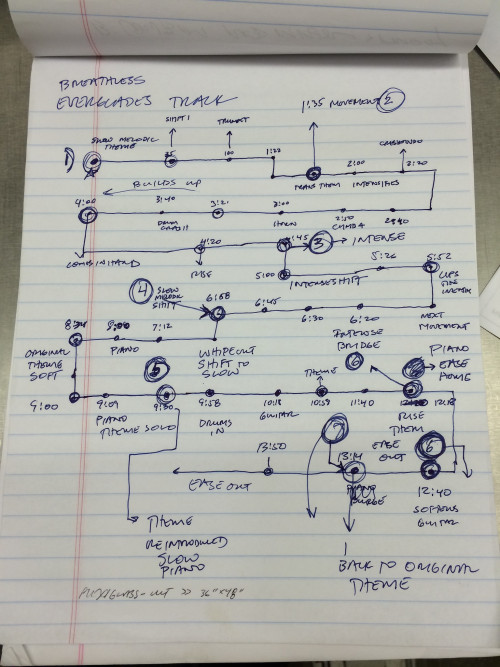
AS: Those my key frames. I began to think about it visually and this churned out a lot of projection mapping and then syncing the music to the projection, the visual cues, onto the sculpture based upon your music.
TB: I can’t wait. I know what you’re developing right now and when you first showed it to me it was in the draw state. And I think you only had six or seven variations. But you could still see, as an artist, I could still see what you were going for, and man, when you started talking about having like up to forty variations, and doing all these things. I was like, “dude, visually that’s gonna be amazing.” [Andrew has finished the video and you can see it in his YouTube channel.]
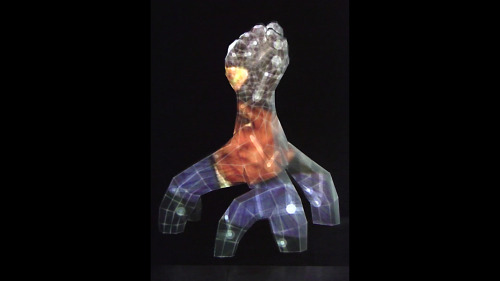
AS; I remember hearing you on the radio and you were talking about “See Me As I Am” and immediately I got inspiration. What I am trying to do with the work is to create a sort of dynamic simulation that can be tied to your live performances.
TB: Yes, I know.
AS: And, then the music becomes this sort of living organism that you can use to express the profound ideas that this album encapsulates. That’s the most interesting about this album, it’s art that’s making a really strong declarative statement about our times. And to be able to use that to inspire artistic works, visual works, and visual works using art and technology in a way that really pushes the forefront of working in sculpture, working in video, working in animation, working with light; it’s a really wonderful place to be at this point.
TB: When I first put the E-Collective band together, you know, I wanted to inspire some young kids, those who had a a little notion of becoming instrumentalists, make something they could connect to and take it from there. So that was where it started I’m always trying to do things that hopefully will have some type of social significance to it, and now to bring you into the process, to now have this piece of it, the visual part of it. I hope this inspires some young artists. But then with the video thing you’re working on…To bring all of those things together, man, that will be really powerful.
AS: And I love this thing that you’ve done recently where you ask people to make artworks. That are inspired by, when they hear the music of Breathless, they are going to be INSPIRED. [There was an art contest set up through Creative Allies; you can see the final entries here.] It’s gonna be a collection of art that’s going to go places that neither one of us could…
TB: Could imagine.
AS: …ever imagine
AS: This makes this project bigger than you. And taking it full circle, I feel that these are the types of statements that we want to be making…
TB: Of course.
AS: At this point in our life.
TB: Of course.
AS: And we are very lucky because when we were young and starting out our own hope would to be here at this time and this place and being able to make the work that you want to make.
TB: Right, because when we had those discussions back in our Brooklyn days, you know, we were constantly talking about making work that was important, making work that could really inspire, What we couldn’t see back then is that it’s a process. We knew it intellectually. It’s a process of life. Where you have to experience life to then come back at it and replicate it in what it is that you’re doing. You know, we were YOUNG back then and we hadn’t experienced much, you know what I mean? But we were still trying.

AS: We thought we could do anything.

TB: Of course, of course, that’s what happens when you’re in your twenties. But now, to be at this point, what we’ve both gone through so many things in our lives, you know, personally, professionally, artistically, you know, to see it come to this, you know, and, I feel very blessed and I’m thankful for our friendship.
AS: Always.
TB: Oh man, you have no idea. And the people who don’t know us, they don’t know, you know, this is the type of dude…You’re the type of dude, like we won’t talk for months.
AS: Right.
TB: Right. And then all of a sudden I get a little message…Boom. “Hey man look at this, I was thinking about this.” And I go, damn…The thing with the dogs? Yeah those are killing me.

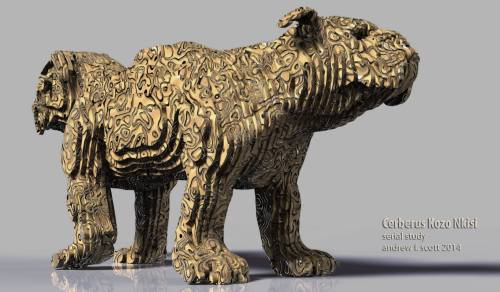
MORE WORK BY ANDREW F. SCOTT
